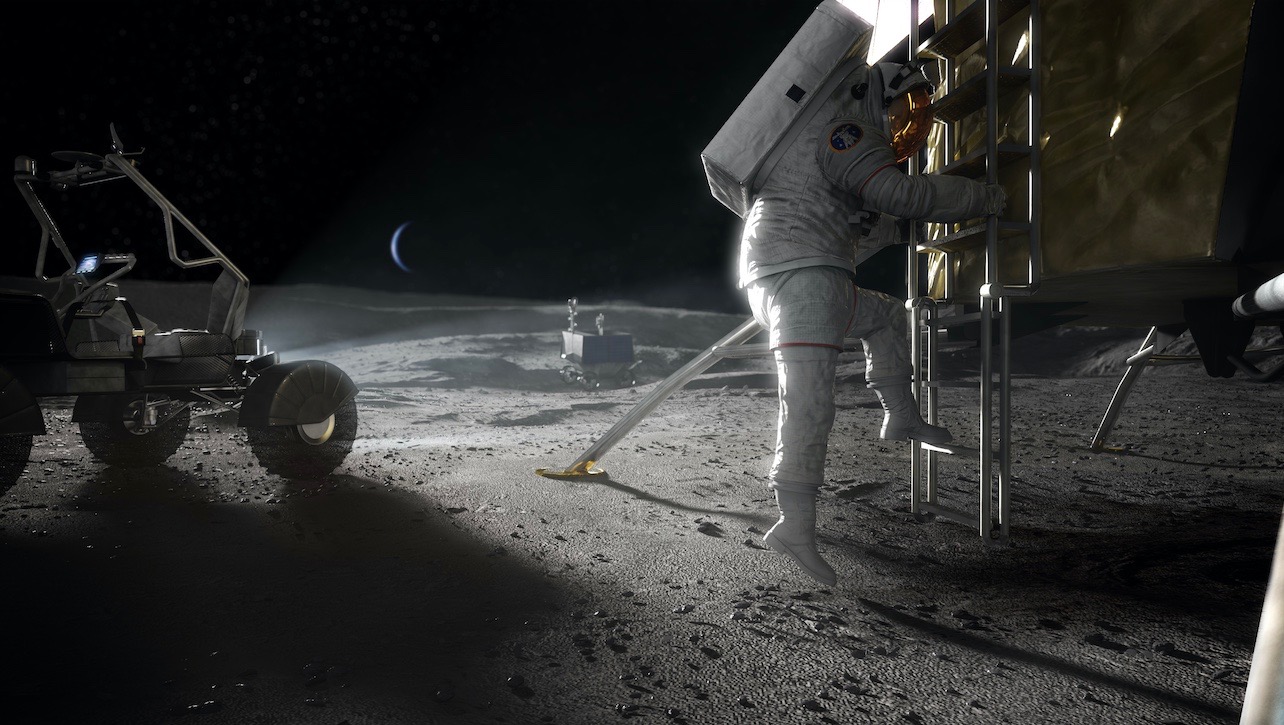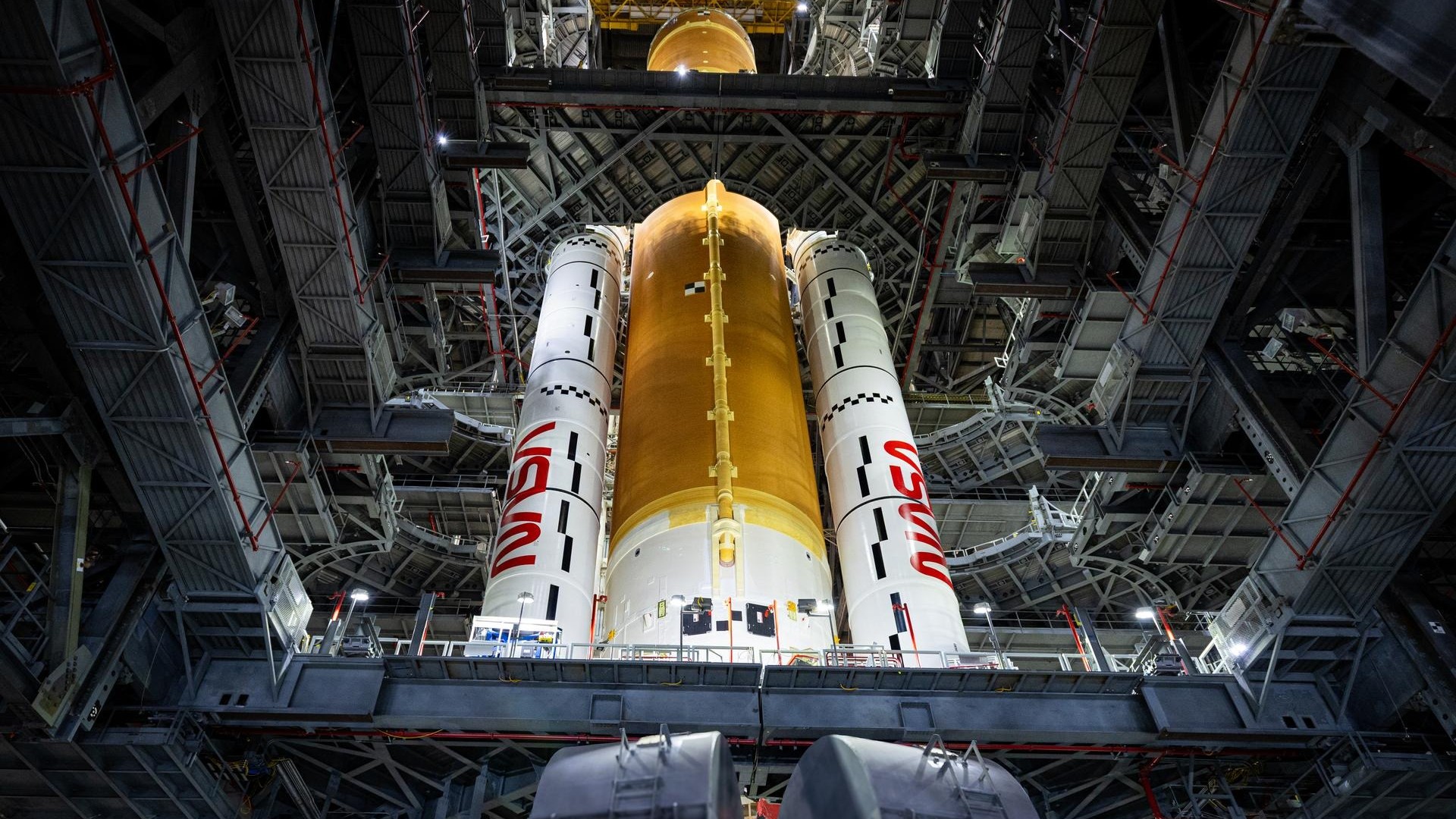NASA will spend $93 billion on Artemis moon program by 2025, report estimates

Putting boots on the moon is an expensive proposition.
NASA's spending on its Artemis program, which aims to establish a sustainable human presence on and around the moon by the end of the decade, is projected to reach a total of $93 billion by 2025, according to a new audit by the NASA Office of Inspector General (OIG).
"Moreover, while NASA has several initiatives underway aimed at increasing affordability, we project the current production cost of a single SLS/Orion system to be $4.1 billion per launch," the OIG report states, referring to the Orion crew capsule and Space Launch System rocket, which are core Artemis elements.
"Looking ahead, without capturing, accurately reporting and reducing the cost of future SLS/Orion missions, the Agency will face significant challenges to sustaining its Artemis program in its current configuration," adds the 73-page report, which was released Monday (Nov. 15).
For comparison, the U.S. spent $28 billion on NASA's Apollo moon program between 1960 and 1973, according to the nonprofit Planetary Society. That's about $280 billion in today's dollars.
Related: How NASA's Artemis moon landing with astronauts works
13 years of spending
Although the Artemis program was first announced in December 2017, development of Orion and the SLS officially began in 2011. So the OIG report's $93 billion estimate encompasses more than a decade of spending, from fiscal year (FY) 2012 through fiscal year 2025. (On the U.S. government's calendar, fiscal years start on Oct. 1 and end on Sept. 30. FY2012, for example, began on Oct. 1, 2011.)
Breaking space news, the latest updates on rocket launches, skywatching events and more!
The original plan to return to the moon called for landing astronauts near the moon's south pole for the first time by 2028. In March 2019, however, the administration of President Donald Trump accelerated things, re-targeting the first crewed lunar landing since the Apollo days for 2024 and dubbing the initiative the Artemis program.
That revised timeline was widely viewed within the space community as overly ambitious, and NASA is no longer working toward it: Last week, agency chief Bill Nelson announced that the first crewed Artemis landing will likely take place no earlier than 2025.
And 2025 may be out of reach as well. The new OIG report, which was apparently written before Nelson's announcement, estimates that NASA will miss the Trump administration's late-2024 landing goal "by several years." The audit cites the need to develop and test new Artemis spacesuits, which are behind schedule, and the program's Human Landing System (HLS), which will ferry astronauts to and from the lunar surface.
In April 2021, NASA selected SpaceX to provide the initial Artemis HLS, which will be a version of the company's huge Starship vehicle. However, two companies that lost out on the HLS contract, Jeff Bezos' Blue Origin and Dynetics, filed protests with the OIG just after the award was announced. Those protests were denied in July, but Blue Origin then filed a lawsuit, which was dismissed earlier this month. So work under the Starship HLS contract is basically just now getting started.
Likely launch delays
The first crewed Artemis landing mission is called Artemis 3, because it will be the third launch in the program. The first, Artemis 1, will send an uncrewed Orion on a journey around the moon. Artemis 2 will also be a circumlunar mission, but with astronauts aboard.
NASA is targeting February 2022 for the launch of Artemis 1. But the OIG report is less bullish, estimating that the mission "will be ready to launch by summer 2022."
Such Artemis delays have multiple causes, according to the report, from technical challenges to the COVID-19 pandemic to extreme weather events. This past August, for example, Hurricane Ida walloped NASA's Michoud Assembly Facility in Louisiana, which builds the core stage for the SLS.
In addition, the HLS and another Artemis element, the moon-orbiting space station known as Gateway, received less money from Congress in FY2021 "than required to meet NASA’s initial acquisition strategy," the report notes.
The OIG report makes nine recommendations to Jim Free, who as NASA's associate administrator for the Exploration Systems Development (ESD) Mission Directorate is overseeing Artemis. This advice is designed to improve the "accuracy, transparency and safety of human spaceflight."
The space agency concurred completely or partially with all but two of the recommendations. Those two were "develop an Artemis-wide cost estimate and update it on an annual basis" and "maintain an accounting of per-mission costs and establish a benchmark against which NASA can assess the outcome of initiatives to increase the affordability of ESD systems."
The new audit focuses on the Artemis program's schedule, its projected costs and how NASA's acquisition and programmatic strategies affect the coming moonshot. It was conducted from December 2020 through November 2021, OIG officials said.
The new report is the second in a series directly assessing the Artemis program. Over the past five years, however, the OIG and the Government Accountability Office have released 21 reports "of significant relevance to the subject of this report," the audit states.
Mike Wall is the author of "Out There" (Grand Central Publishing, 2018; illustrated by Karl Tate), a book about the search for alien life. Follow him on Twitter @michaeldwall. Follow us on Twitter @Spacedotcom or on Facebook.

Michael Wall is a Senior Space Writer with Space.com and joined the team in 2010. He primarily covers exoplanets, spaceflight and military space, but has been known to dabble in the space art beat. His book about the search for alien life, "Out There," was published on Nov. 13, 2018. Before becoming a science writer, Michael worked as a herpetologist and wildlife biologist. He has a Ph.D. in evolutionary biology from the University of Sydney, Australia, a bachelor's degree from the University of Arizona, and a graduate certificate in science writing from the University of California, Santa Cruz. To find out what his latest project is, you can follow Michael on Twitter.
